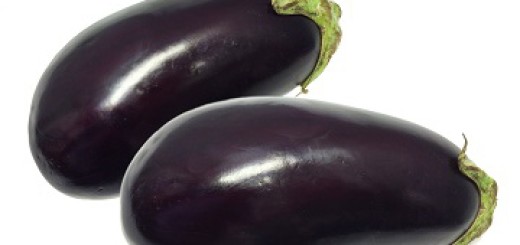Tips for Healthy Living: Mighty King Kale

Geri Wohl, Certified Nutrition Consultant Better Eating Coach
By Geri Wohl, CNC
Maybe improved health was one of your New Year’s resolutions. Incorporating superfoods into your diet is an easy way to positively impact your health. Superfoods are nutrient dense foods packed with vitamins, minerals and antioxidants that have been associated with reducing one’s risk for certain conditions or diseases such as cardiovascular disease, some forms of cancer, rheumatoid arthritis and diabetes. Kale has made a resurgence as one of the foods jam-packed with nutrients. The ancient Greeks and Romans appreciated it for its health-promoting properties—now we do too.
Kale is a member of the cabbage or Brassica family that includes broccoli, cauliflower, Brussels sprouts and of course, cabbage. It is mainly grown in the fall and winter because the cool weather with a light frost is required to bring out its sweet flavor. The most common varieties of kale are curly kale, Red Russian kale, and lacinato kale. Let’s delve into lacinato kale although the health benefits are similar amongst the different varieties.
Lacinato kale is also called Tuscan kale or cavalonero. This variety was discovered in Italy in the late 19th century. It is very popular in the northern parts of Italy and is a staple in Italian cooking. Tuscan kale appears different from other kale varieties in that it has long, wavy blue-green leaves with a wrinkled leaf surface. Lacinato kale has a slightly sweeter taste than the more common curly kale.
The long list of vitamins, minerals and phytochemicals found in kale explains its multitude of health-supporting benefits. As with other leafy greens, it is very low in calories. One cup of kale only has 35 calories, 5% of the daily value (DV) of fiber and 4% of the DV of protein. In fact, the protein found in kale contains all 9 essential amino acids and 9 non-essential amino acids. Amino acids are the constituents of proteins that the body rearranges to build new proteins. Essential amino acids are ones that must be obtained from our diet; non-essential amino acids are ones that the body can produce on its own. For more on the importance of protein in the body, see my article “Benefits of Breakfast.” Kale is also one of the few vegetables that has a higher value of omega 3 fatty acids than omega 6 fatty acids improving our omega 3 to 6 ratio that promotes better health.
Kale is rich in vitamin A–one cup has 206% of the DV. Vitamin A is a fat-soluble vitamin that is required for keeping the mucus membranes healthy, supporting skin health and maintaining good vision. Vitamin A-rich foods may also provide protection from lung and oral cancers since vitamin A is supporting these mucus membranes. Keeping these membranes and cells healthy at this time of year is especially important given all the cold and flu bugs roaming around. Vitamin A is a key nutrient for eye health and has been shown to be beneficial in reducing the incidence of macular degeneration. It also enhances the ability of the immune system to fight off infections. For more about vitamin A, see my article “Chard—The Other Super Leafy Green.”
Continuing along in the alphabet of nutrients, one cup of kale has 134% of the DV of vitamin C. To maximize the vitamin C found in kale, it is best to eat it raw or lightly steamed. Boiling foods with vitamin C will result in its deactivation. Vitamin C acts as a powerful antioxidant along with vitamins A and E. It also supports the immune system by helping the body develop resistance to infections and neutralizing harmful free radicals that can cause diseases.
Kale is also an excellent source of vitamin K. One cup has a whopping 684% of the DV of vitamin K. As mentioned in previous articles, vitamin K plays an active role in bone health by strengthening the bone matrix where new bone is laid out. Vitamin K also supports the brain and the neurons, which may reduce the incidence of Alzheimer’s disease. It also plays an essential role throughout the body in blood clotting. It is an integral part of the clotting cascade. If one is on a blood thinner such as Coumadin, consult your doctor as to the appropriate amount of vitamin K from food that you should be consuming.
The deep blue-green color is an indication that kale is full of antioxidants. In fact, kale has one of the highest ORAC scores, 1770, compared to other foods. ORAC is a value that measures a food’s ability to scavenge free radicals that can cause disease at the cellular level. By neutralizing the free radicals, the body may be more in balance, reducing the likelihood of disease. Researchers believe kale’s high ORAC score may be due to at least 45 different flavonoids in kale which impart antioxidant and anti-inflammatory properties. In addition, carotenoids such as beta-carotene (the precursor to vitamin A) and lutein and zeaxanthin (antioxidants shown to promote eye health) are other antioxidants that protect the body.
Glucosinolates are another phytochemical found in kale that researchers are studying for its beneficial effects on cancers, especially breast cancer. Glucosinolates are sulfur-containing compounds that are beneficial to the liver in the detoxification process. In addition, once broken down, these compounds’ by-products may protect the cells from DNA damage, removing potential carcinogens and stimulating destruction of cancer cells.
Kale also contains B vitamins needed for metabolism and energy production in the body as well as a variety of minerals such as potassium, magnesium and iron. Potassium is needed for all the cellular and body fluids. It acts to help control the heart rate and blood pressure and counters the effects of sodium. Magnesium allows the body to be more alkaline, thus promoting more overall wellness. The rich green color of kale indicates the chlorophyll found within. In plants, the center of the chemical structure of chlorophyll is magnesium. In humans, magnesium is needed for over 300 biologic processes. Finally, iron is needed for proper red blood cell formation as well as support of the immune system and energy production.
We can certainly see why adding kale to one’s diet can promote wellness on so many levels. Kale leaves should be crisp and a vibrant deep green. They should be washed thoroughly under water and then soaked for 10 minutes in a salty water bath to remove any soil or dirt from the leaves or stalks. The tough stalks can be cut away. As raw kale can be quite fibrous, it may be difficult for some to digest. For those individuals, try steaming it to reap the benefits. For a delicious kale salad, try my Mighty Kale Salad or Roasted Kale Chips.
Note: Kale is a goitrogenic food and eaten raw in large quantities may impair thyroid health in those with thyroid issues.
Enjoy this delicious powerhouse of nutrients and reap the super-power rewards to your health and wellness!
© Geri Wohl, CNC










